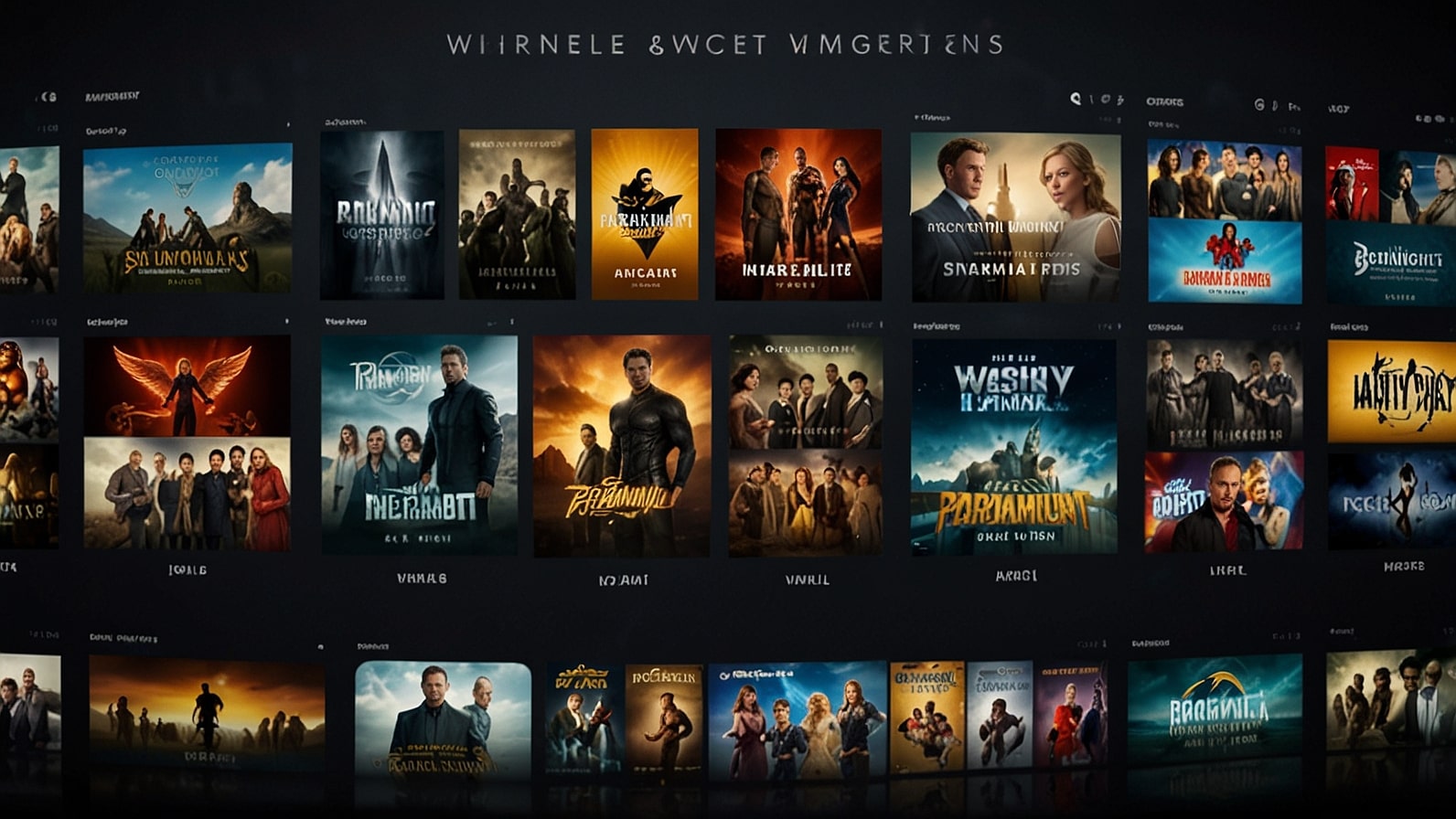In what has so far been a dazzling turn of events that has rocked the entertainment scene, it has been revealed that, according to reports on September 15, 2025, Paramount Skydance is poised to make a buyout proposal, with Warner Bros. Discovery (WBD) being the major speculated target.
The story initially reported in a post on X at 07:30 IST by Business Insider has sparked massive discussions, with analysts and fans of the industry speculating about the possibilities of transforming the media. This potential merger, if it materialises, may reorganise content creation, streaming supremacy, and global dissemination schemes, positioning the combined entity as a force in a rapidly competitive digital entertainment sector.
A Tactical Action in the World of Streaming
The media industry has been going through a transitional period, and consolidation has become one of the major strategies to enable the legacy companies to compete with the technological giants such as Netflix and Amazon. Since the successful merger of Discovery and WarnerMedia, which resulted in the creation of Warner Bros. Discovery in 2022, the company has been undertaking aggressive measures to downsize its operations under the leadership of CEO David Zaslav.
The portfolio of the company, which consists of HBO, CNN, Warner Bros. Pictures, and the streaming service Max, has struggled to capture the market share of competitors with stronger technological penetration. Meanwhile, Paramount Skydance is the brand supported by Skydance Media, owned by David Ellison, and it owns assets such as Paramount Pictures, CBS, and Paramount+ and was trying to use them to increase its size to compete in the streaming wars.
The alleged acquisition offer is at a time when the two corporations are going through a fast-changing industry. The streaming subscriptions have reached maturity in the industry, and media giants have been forced to form mergers to gain synergies. Warner Bros. Discovery and Paramount Skydance would also have an unmatched content portfolio, including iconic franchises such as Mission: Impossible, Harry Potter, Star Trek, and The Batman, as well as a robust sports and news business.
With a merger like this, it would be possible to have a streaming platform that can potentially compete with Netflix, which has 300 million subscribers worldwide, utilising Max and Paramount+ to provide a broadened content portfolio that would attract different demographics.
Why Now? Pressures in Industry and Timing
This rumoured bid is also not timely. The entertainment industry is struggling with the increasing cost of production, divided audiences, and the necessity to innovate in technological aspects. Warner Bros. Discovery has faced criticism over its $40 billion debt, which was inherited from the 2022 merger, and as such, Zaslav is now selling non-core assets to focus on profitability.
The recent developments, including licensing HBO content to Netflix and considering a partnership with DC Studios, are indicative of a rational financial recovery strategy. On the same note, Paramount has not been spared, given that its stock has not been performing because cord-cutting trends have affected CBS and the competitive streaming market.
The presence of Skydance introduces some dynamism to the equation. The son of Larry Ellison, who is the founder of Oracle, David Ellison has established Skydance as a lean company with a history of creating films with the highest grosses, such as Top Gun: Maverick. With the help of private investment and the technological expertise of Oracle, Skydance has the potential to introduce the table with cutting-edge AI and data analytics, which would maximise the efficiency of the distribution and content personalisation.
The possible acquisition is also in line with the industry-wide trends wherein technology-oriented players are starting to play an important role in media consolidation. X posts have emphasised how Ellison envisioned an amalgamation of tech and media, and that this acquisition has the potential to incorporate the cloud infrastructure of Oracle to simplify the streaming processes, which is key in a business where customer loyalty is determined by the user experience.
What it means to Content Creators and Consumers
Such a large-scale merger would cause rippling effects both to the content creators and consumers. To filmmakers, writers and actors, a unified body would imply increased resources to produce films with high budgets, and increased competition for profitability.
The latest cost-cutting tactics by Warner Bros. Discovery, such as writing off finished films on the shelf, have attracted the creatives. They could make a joint venture with Skydance, which has proven talent-based projects and a focus on financial restraint, possibly reinvigorating such franchises as Dune or Star Trek.
To consumers, the merger would help to consolidate the divided streaming market. The issue of subscribing to more than one platform has been problematic, and the average household in the U.S. subscribes to four services. A Max-Paramount+ platform could provide a single destination for the high-end content, both the HBO-quality dramas and the Paramount family-centric products.
Nonetheless, the chances of an increase in subscriptions are high, and unified platforms tend to increase costs due to integration costs. On X, the reactions are ambivalent, as some users are enthusiastic about a super-streamer, and other users are concerned that the competition will decrease and result in monopolistic actions.
Competitive Barriers and Regulations
The road to a successful buyout is not easy. One of the major obstacles is regulatory scrutiny because the current administration has enhanced antitrust issues in the U.S. The Federal Trade Commission has implemented a very tough approach to media mergers, which is evidenced in its audit of the Disney-Fox assets acquisition.
Any merger between Warner Bros. Discovery and Paramount Skydance would be subject to intensive scrutiny, especially given the potential for the new company to control the cable, film, and streaming businesses. Observers in the industry observe that the structure of the deal, whether an acquisition or a strategic alliance, will ascertain its fate on the regulatory front.
There is an added complexity as tech giants compete with it. The acquisition of MGM by Amazon, worth $8.5 billion, and the increased spending by Apple on original content have intensified the competition. Combined Warner Bros.
Discovery and Paramount Skydance would have to innovate to stay on track, especially when it comes to using AI to recommend their content and targeting advertisements. The role of Oracle may offer a technological advantage; however, the possibility of combining different corporate cultures and technology bases creates challenges to operation.
Bigger Picture: Media Transformative Moment
The hype about this possible acquisition highlights a larger story: the media business is in transition. The traditional studios are not simply the creators of the content anymore; they have to transform themselves into tech-oriented platforms.
This is evidenced by the shift of Warner Bros. Discovery to streaming and the desire of Paramount Skydance to grow. In case the deal does come to fruition, it may cause a chain of further consolidation, where smaller powerhouses such as AMC Networks or Lionsgate will be targeted by acquisitions.
The leadership dynamics have also been discussed on an occasion of the news. The aggressive cost-reduction measures by Zaslav have divided the stakeholders, but the fact that Ellison is a creative-friendly executive may facilitate integration.
On X, industry observers theorise that Ellison could assume a high-profile position in the merged company, possibly as co-CEO, with the help of his contacts with the best talent, such as Tom Cruise. This would help stabilise investor confidence and bring on board the best-of-the-best creators concerned over the direction taken by Zaslav.
Its Future: The Future of Warner Bros. Discovery
Neither Warner Bros. Discovery nor Paramount Skydance has officially confirmed the buyout bid as of September 15, 2025. Nonetheless, the rumour itself has changed the agenda, and WBD became one of the key players in the next chapter of the industry.
The investors and analysts will be listening out to any statements made by either Zaslav or Ellison, especially in the next number of earnings calls, or industry events such as the Goldman Sachs Communacopia Conference.
In the meantime, the entertainment industry is full of potential. An effective merger would produce a media giant that would be able to reshape the way stories are being relayed and consumed in the world. However, the dangers, such as regulatory backlash, cross-cultural conflict, and financial stress, become extremely significant.
With the industry in limbo, there is one thing that is definite, and that is the potential merger of Warner Bros. Discovery and the Paramount Skydance business is a headline story that will be written as the media in 2025 makes its high-stakes transition.









